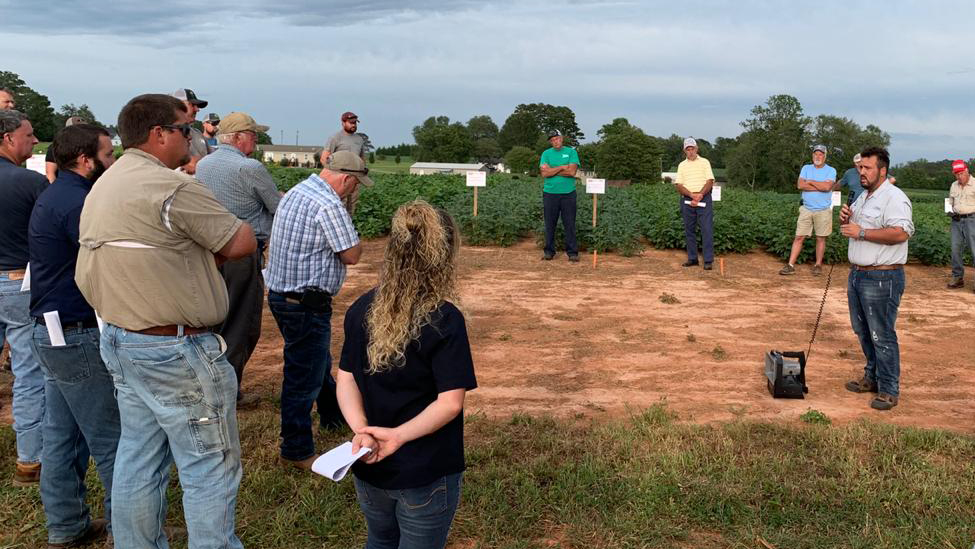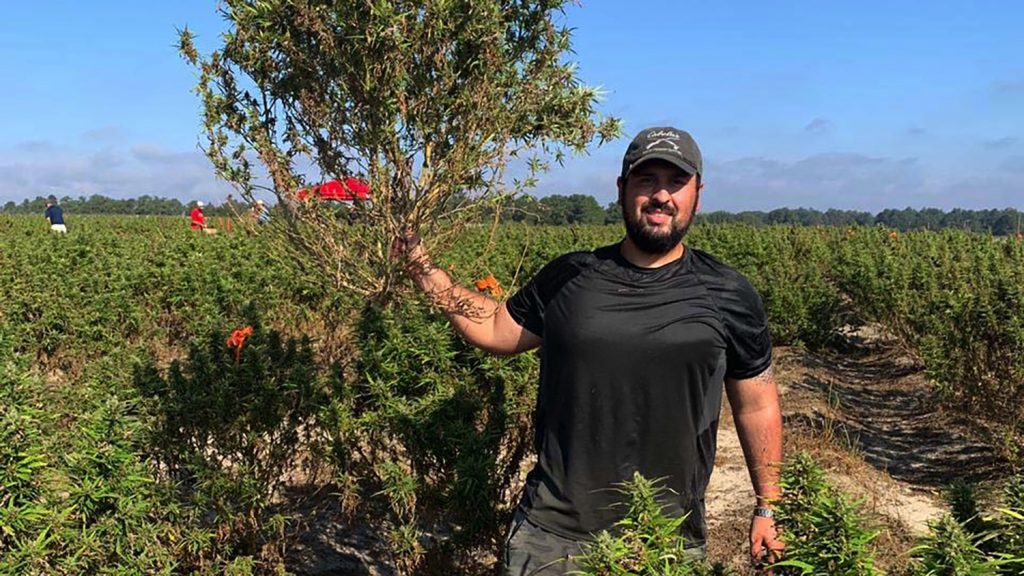
International scholar Eduardo Barros took a required internship and made it a remarkable experience. A graduate student in crop and sciences at the Pontifícia Universidade Católica do Paraná in Brazil, Barros arrived at NC State to learn more about soybean cultivation in North Carolina and extended his stay for the friendships and new experiences.
“Soybeans are one of Brazil’s principal crops, so I thought it would be a great idea to learn how it is done here,” said Barros. “The United States is the largest producer of soybeans in the world, so I wanted to do my internship for my degree with NC State University.”
Barros spent his internship with the NC State Extension Soybean Program, which conducts research to help NC farmers enhance profitability across the state. NC farmers grow soybeans in all 100 counties, weathering various climate and insect challenges across the state. Barros was exposed to myriad methods related to soybean cultivation and harvest during his internship.
“Eduardo helped spray plots, used various sampling techniques, aided with harvest and planting at research sites across the state, including in Currituck, Hyde, Sampson, Nash, Rowan, Union and Yadkin counties,” said Assistant Professor and Soybean Extension Specialist Rachel Vann, who facilitated the internship. “At the Soybean Extension Graduate Student Tour, he engaged with graduate students working in applied soybean research and extension from across the United States. He also spent time with our county agents to better understand the North Carolina extension system.”
In addition, Barros spoke in early September at the Yadkin County Soybean Field Day, where he informed the attendees about soybean production in Brazil.

“I spoke about grain crops in Brazil. In my state, Paraná, we are able to do three crops a year—soybeans, followed by corn, and wheat in the winter—and I pointed out that we have differences in our logistics after harvest,” said Barros. “For example, we have to do several treatments on the seed, inoculation and spraying fungicide in order to grow soybeans.”
Barros extended his stay an extra month to continue his work and because he was having so much fun.
“I wish I could stay longer; there are still a lot of things that I could possibly do,” he said. “Like last week I had the chance to help to harvest a hemp field for a grad student project.”
This post was originally published in College of Agriculture and Life Sciences News.